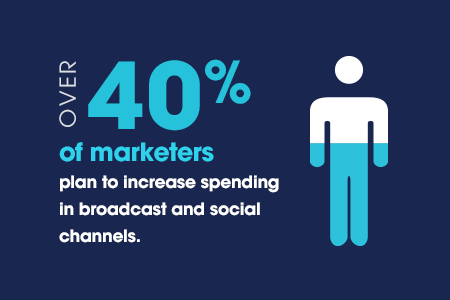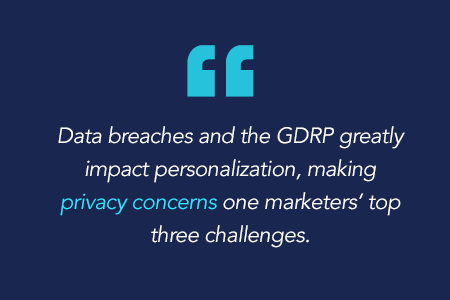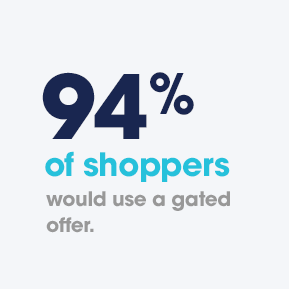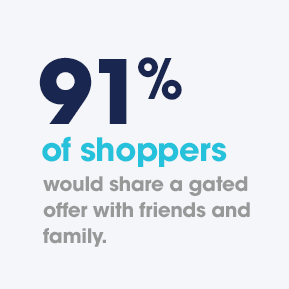Webinar Q&A: The State of Customer Acquisition, Trends and Tips

In November of 2018, we hosted a webinar with Stacy Carpenter, Director of Customer Experience at TOMs, to discuss the state of customer acquisition and where it’s headed in 2019. The webinar was based on WBR Insights’ research, commissioned by SheerID, that polled 150 digital marketers in retail, travel, consumer packaged goods, finance and food services.
The research report, The State of Customer Acquisition: How Marketers are Confronting the Challenges of a Noisy Marketplace, uncovered that eight in ten marketers are under more pressure this year than last, largely because of the difficulties they face in differentiating their brand in a noisy marketplace.
The report also revealed how marketers are planning to spend their budgets in 2019, as well as their attitudes on new promotional techniques like gated, exclusive offers.
Here is the webinar recording. Below are answers to the questions the audience asked.
1. What new channels are marketers planning to invest in for 2019?
According to our State of Customer Acquisition report, marketers are planning to increase spending in virtually every channel. The top two channels poised to see the most growth are social and broadcast marketing.
This signals that marketers are investing in TV and Radio to raise brand awareness and generate demand, as well as 1:1 influencer marketing in social platforms like Instagram, Facebook and Snapchat to influence consumer selection.
Moreover, because spending is going up across the board, we expect competition for consumer attention will be even higher than this past year, in which nearly eight in ten marketers indicated they were feeling more pressure to reach acquisition goals than in 2017.

2. Why do you think marketers indicated privacy (in addition to differentiation) as a top issue this year?
How to manage consumer privacy has been an industry topic ever since the late 1990s when Netscape Navigator introduced “cookies” in its web browser to speed up page load times and provide more personalization. The issue is now a top concern of marketers because consumers are paying more attention to how their personal data is being used.
Privacy breaches by companies like Cambridge Analytica have encouraged consumers to think twice about the data they share and how they can protect it. Also, new legislation, such as the General Data Protection Regulation (GDPR) passed in the EU earlier this year, portend a more active role by government in determining how data should be managed and used. Companies now have increased liability when data isn’t properly collected and maintained.
We believe this is why privacy became on of the top three issues for marketers this year, and will likely grow in importance as marketers try to provide a personalized customer experience while also protecting their privacy.
Gated, exclusive offers are a solution that balances these competing interests. Unlike the majority of promotions, a gated offer allows consumers opt-in to prove their eligibility and rewards them when they qualify. We believe this type of equitable value exchange is the way forward for marketers and consumers.

3. Too many discounts may create an off-price brand. Do you think Amazon is contributing to this trend in marketing?
We agree, you need to be selective and purposeful with your discounting strategy. That’s why gated offers provide a great alternative to over-used, universal discounting.
Instead of using a universal discount that isn’t personalized to a segment, you can leverage gated offers to selectively target high value groups. And because gated offers are truly exclusive, they provide a powerful incentive for your target segment to both act now and share the promotion with eligible colleagues and friends, which drive down acquisition costs.
Brands like T-mobile are forging a new path by using gated offers as the foundation of multi-dimensional programs that provide target segments with additional services, such as training and job placement for military veterans. In addition to driving short-term performance, these broad campaigns strengthens the relationship the brand has with the segment.
4. Can I create a gated offer for any of my customer segments?
No. Gated, exclusive offers can only be used for specific market segments that are allowed to receive special discounts by law. These include: the military, teachers, first-responders, students, young-adults (depending on the state you are in), seniors, employees, partners and partner employees.
While gated, exclusive offers can’t be provided to all segments, they can be broadly applied to your customer base by aligning the core attributes of your target customer with an applicable segment.
For example, if you are a home improvement store, you may want to target the military as an eligible segment, as they typically own a home and are do-it-yourselfers. Or if you are a trendy apparel retailer, you likely want to target students who are fashion-focused and have a higher than average disposable income for clothing.

5. How do gated offers affect other segments that don’t qualify for the offer?
Because gated offers are typically provided to a “protected” customer segment like senior citizens or the military, they are viewed favorably by the community. People recognize that it’s appropriate to reward these groups because of their status in society, and they generally have a positive view of the brand that offer these benefits.
6. Doesn’t a gated offer limit my reach?
You should use gated offers with other promotional techniques to help you expand your reach. Gated offers will engage fewer people reach than a universal discount, but they are much more effective in driving conversion and sales because their “exclusivity” appeals directly to buyers.
Gated offers recognize consumers’ unique eligibility, making them feel special, and are only available to that group, incentivizing use and sharing among the community. For these reasons, gated offers should be used as a new tool in your toolbox to generate interest and circulation within these target segments. Our research shows that 94% of shoppers would use a gated offer and 91% would share it with other members in their community.

7. How easy is it to create a gated offer?
It’s very easy to create gated, exclusive offers, but they can be hard to maintain and fraught with fraud if you are using a manual verification process.
The key to creating a gated offer that scales with higher volume is to use a digital verification platform to make it truly exclusive. This is important because without exclusivity, you lose the benefit of higher conversion rates and increased referral traffic mentioned above.
More generally, creating a gated offer is as simple as:
- Determining the target segment.
- Creating the promotional offer.
- Inviting consumers to participate.
- Verifying their eligibility.
- Planning for future promotions.
See our Definitive Guide to Gated Offers for a step by step walk-through and best practices.
8. What is TOMS’ gated offer for teachers?
TOMS currently has a gated, exclusive offer for teachers that provides them with a 10% discount on all purchases at any time. As a mission-driven company, TOMS provides exclusive offers for the military and students as well. Here is Stacy Carpenter discussing TOMS’ gated offer program.
Want to Learn More About the State of Customer Acquisition?
Download the full report: The State of Customer Acquisition: How Marketers are Confronting the Challenges of a Noisy Marketplace.